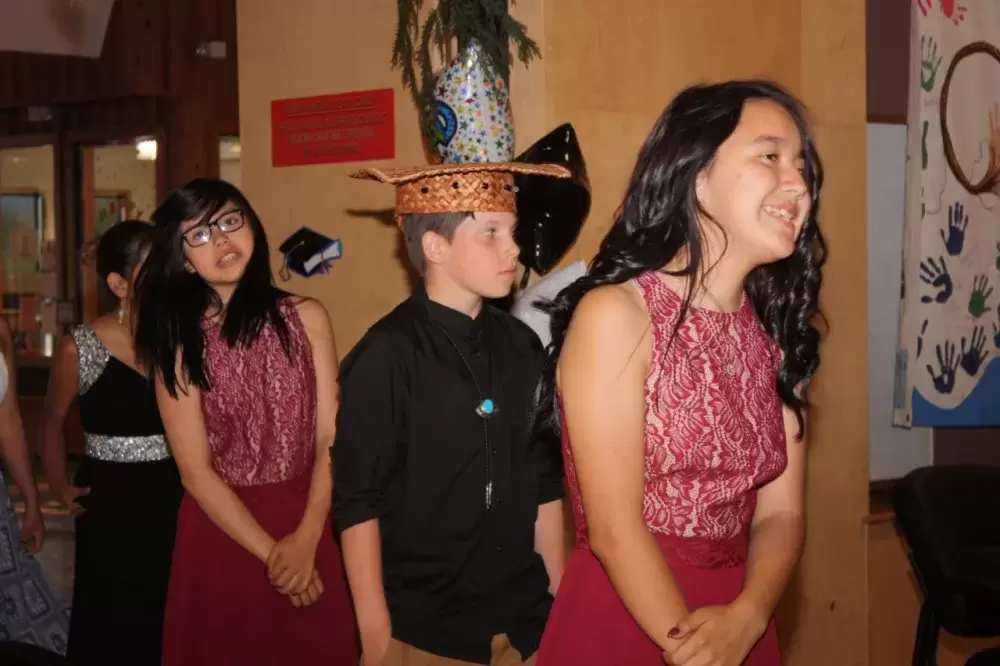In response to the pandemic, faculty at Haahuupayak Elementary School mobilized to try and minimize the added layer of stress imposed on students.
A poll was circulated among staff, students and families, asking whether they’d like to see the school week cut down from five days to four.
“It was almost unanimous across the board,” said principal Nancy Logan.
After presenting the idea to the school board, it was quickly passed and this week marked the first four-day week for the First Nations elementary school in Port Alberni.
By adding a half hour to each day, the instructional hours remain the same.
“We know that we have layers of trauma already within our school setting,” said Logan, adding that the pandemic intensified those strains.
Placing a focus on trauma-informed practices, Haahuupayak aims to create safe, respectful and compassionate learning environments by considering the emotional wellbeing of its students before drilling them with academics.
“We know that kids are overwhelmed, stressed out and anxious,” said Logan. “Shut-down kids are kids that are not learning.”
Acknowledging the student’s feelings and supporting their “big emotions,” allows for a more productive learning space, she said.
Cheyenne Sam’s daughter, Lydia, started her first year at the school as a kindergartener.
“I trust the school and they reassured me of their safety plans,” said Sam. “I was so back-and-forth with putting my girl into school, but her first year is kindergarten – I didn’t want to take that away from her.”
Now, Lydia comes home and counts her fingers in Nuu-chah-nulth.
“She’s always excited to show me something – even if it was a painting she did,” said Sam. “She always has something to share.”
To accommodate 40 students who are in immune compromised situations, the school created a distance-learning program.
Letitia Charleson’s daughter has asthma and her youngest son has respiratory issues.
“We were a little bit worried and concerned that if we were to get COVID-19 in our household that it would be really detrimental for the two of them,” she said.
Taking precautionary measures to keep them safe, she enrolled her children in the distance-learning program through the school.
While homeschooling has been a “major adjustment” for the stay-at-home mother, she feels supported by the distance-learning teacher who is quick to reply to any of her questions.
Unlike Haahuupayak, Charleson said that sticking to a routine with a Monday to Friday schedule has been most effective for her kids.
The additional 108 students have been separated into classrooms of 12 to 14 kids. Each class is its own learning group, which is a collection of students and staff that remain together throughout a school term and primarily interact with each other.
Lunch breaks and recess are staggered to keep interactions with different learning groups at a minimum.
“It's not ideal,” said Logan. “But we are also finding less conflicts and less misunderstandings when we don’t have everybody all together all at once. That’s a little bit of a bonus.”
Only time will tell how effective the shorter school week is on managing stress levels of students, families and faculty.
“It’s a temporary response to try and address wellness and self care,” said Logan. “We have to be at our best to be able to provide the best.”







